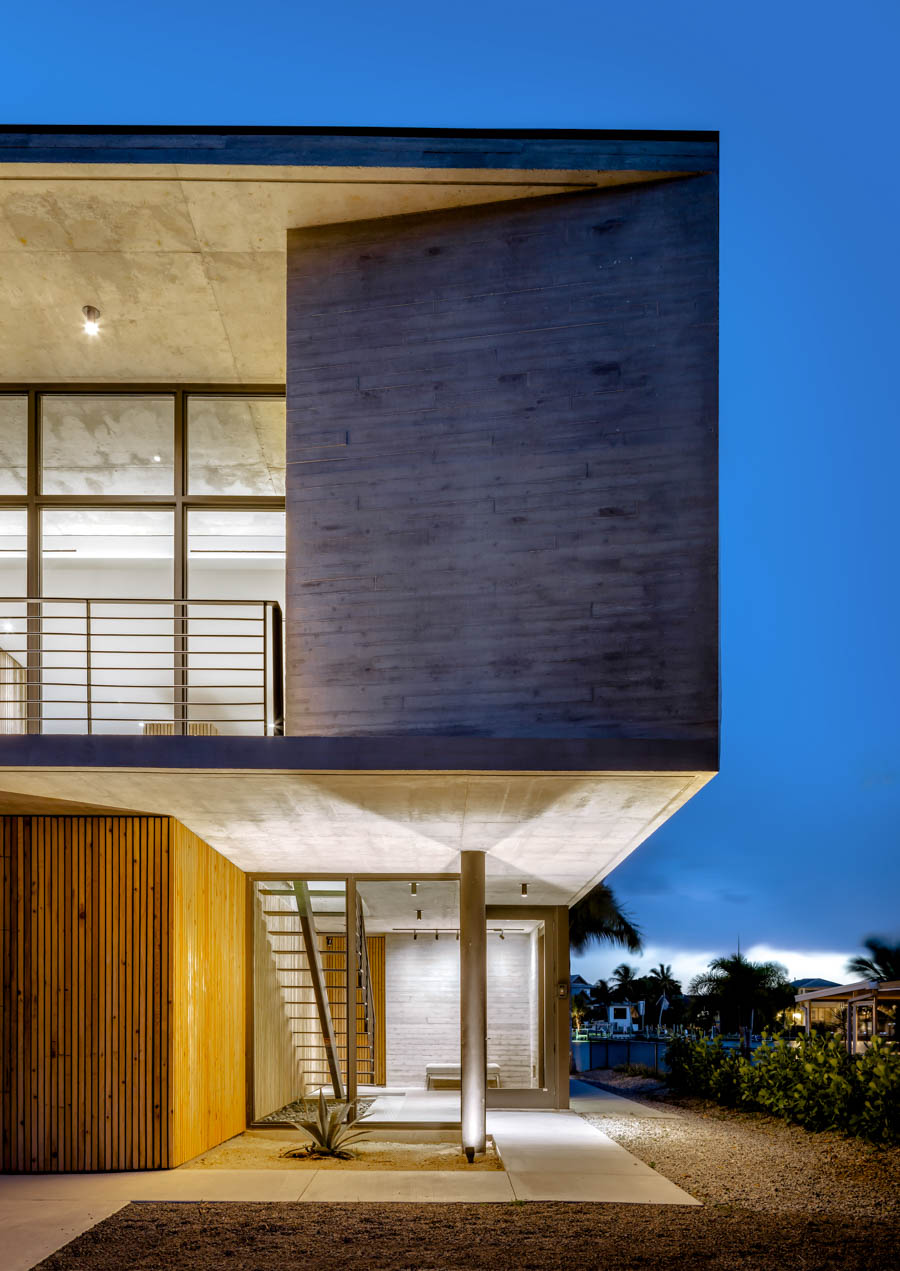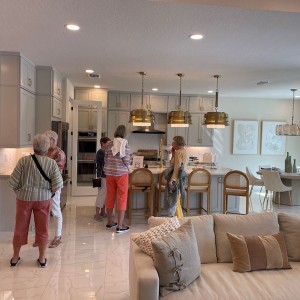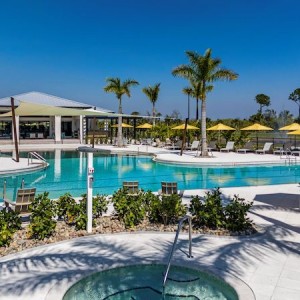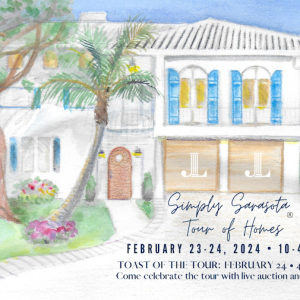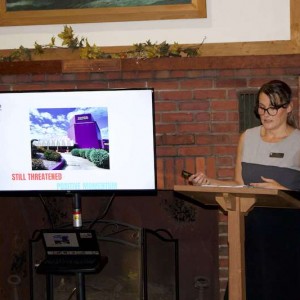When you look through Damien Blumetti’s portfolio, it’s clear that modern architecture is his specialty. What isn’t immediately obvious is just how much of Blumetti’s forward-thinking design sensibility is rooted in the past. In his Siesta Key Bay House project, Blumetti was able to translate midcentury architectural practices into a fresh and contemporary modern home. Blumetti received both his undergraduate and graduate degrees at the University of Florida in Gainesville. While still in school he interned with Guy Peterson, a decorated architect, and another University of Florida alumnus. Blumetti would go on to work with Peterson for nearly a decade before opening his own architecture firm in 2017. “Guy has been my mentor, and still is my mentor,” Blumetti says. “I really learned how to be an architect under his umbrella.”
Under Peterson’s tutelage, Blumetti became well-versed in a regional style of post-war modern design known as the Sarasota School of Architecture. This movement spanned the years between 1941 and 1966. “It’s interesting because it’s part of a lineage,” Blumetti says. “Guy worked directly for architects who belonged to the Sarasota School of Architecture and then I worked for him. And what I’m doing now, I hope, is carrying the torch a little bit of this really strong legacy we have of architecture in Sarasota. It’s really important to me to pay homage to the people who originally paved the way.”
While Blumetti has a reverence for the architectural traditions of his predecessors, emulating those principles isn’t his only priority. He wants to design buildings that meet his clients’ needs and exceed their expectations, while still showcasing his own distinct design style. In the Siesta Key Bay House, he was able to achieve all of these objectives.
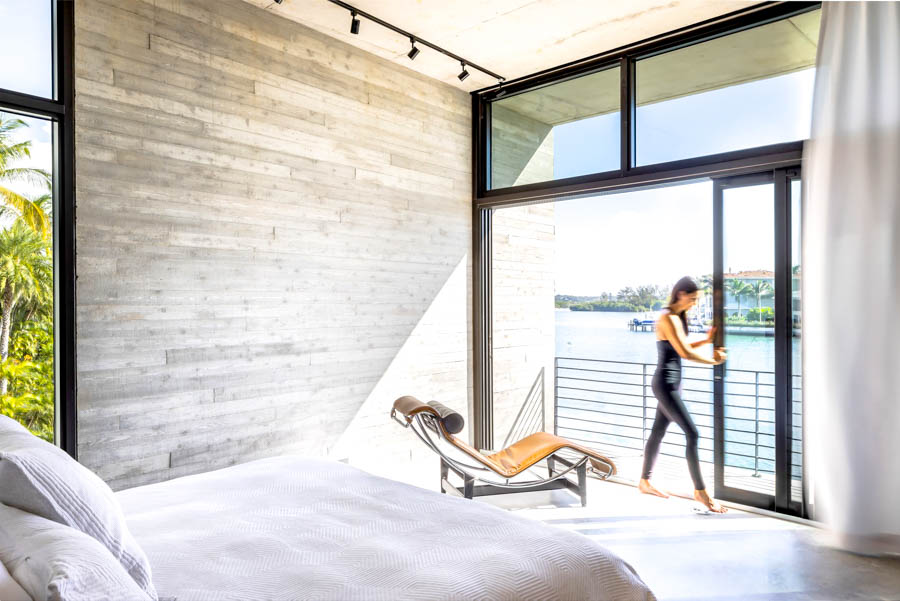
“Going back to the Sarasota School, they were always experimenting with new materials including different types of concrete mixtures,” Blumetti says. “These clients are from Venezuela, and when I did some research it was very apparent that concrete was prevalent in the native construction of Venezuela. So they weren’t scared of the idea of having a concrete house. Actually, they really loved the idea.”
Many modern-style homes feature concrete walls, but they tend to have a smooth finish. Blumetti took a novel approach by using board-formed concrete for the Siesta Key Bay House. Board-formed concrete is a construction method where concrete is poured into forms lined with wooden boards. When the concrete dries, it retains the pattern of the wood grain on the surface.
The Siesta Key Bay House is largely constructed of this board-formed concrete, as well as actual cedar, giving it an organic feel that is unusual in modern architecture. The same boards that were used to create the texture on the concrete were then reused on the house.
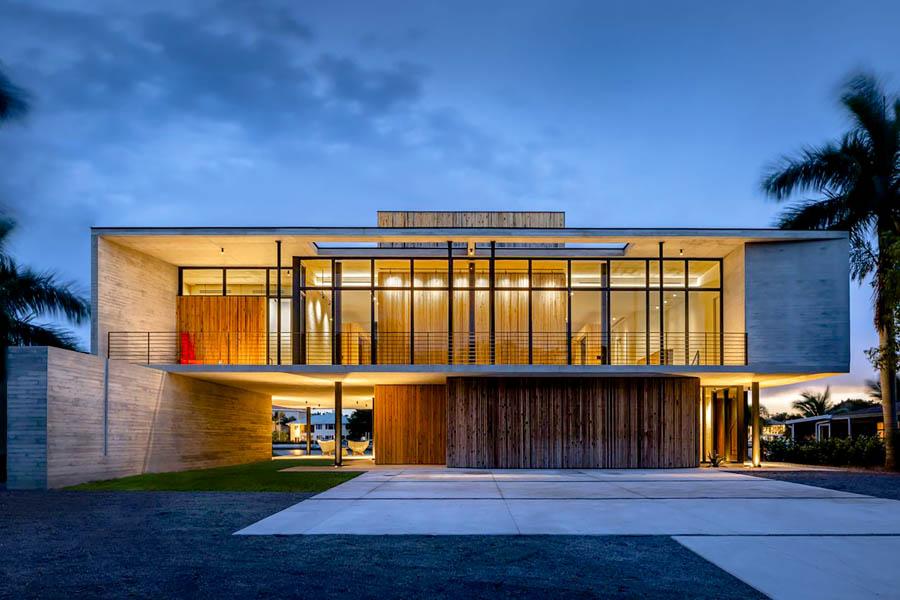
“Instead of just throwing them away and using new wood, we were able to recycle them and use them as the wood elements in the house,” Blumetti says. Sustainability is always a big priority for Blumetti, and it was also important to the clients for this project. Blumetti blended older techniques and newer technology to make the home as eco-conscious as possible. “In the 1950s, homes didn’t have air conditioning,” Blumetti explains. “Architects had to use passive design systems like orientation, large overhangs, and lifting buildings off the ground. There were no flood requirements back then, so houses were raised to help circulate air around the house. It was a very forward-thinking idea back then.”
Passive design elements are prevalent throughout the Siesta Key Bay House, though adaptations have been made. Instead of installing the jalousie windows that were popular in the mid century era, Blumetti used sliding doors to open up the house and create cross-ventilation. Outside, there is a 16-foot overhang on the south side of the house to keep the sun from hitting the abundant windows directly. But Blumetti also sourced heat-absorbing glass to help with the ambient heat.
One of the most compelling features of this house can’t be conveyed through photographs. Blumetti wanted every room in the house to have a view of the water, so he folded in some of the walls in order to create sightlines that most people would deem impossible. Blumetti has nothing but praise for his clients, who were very open to his unconventional design ideas.
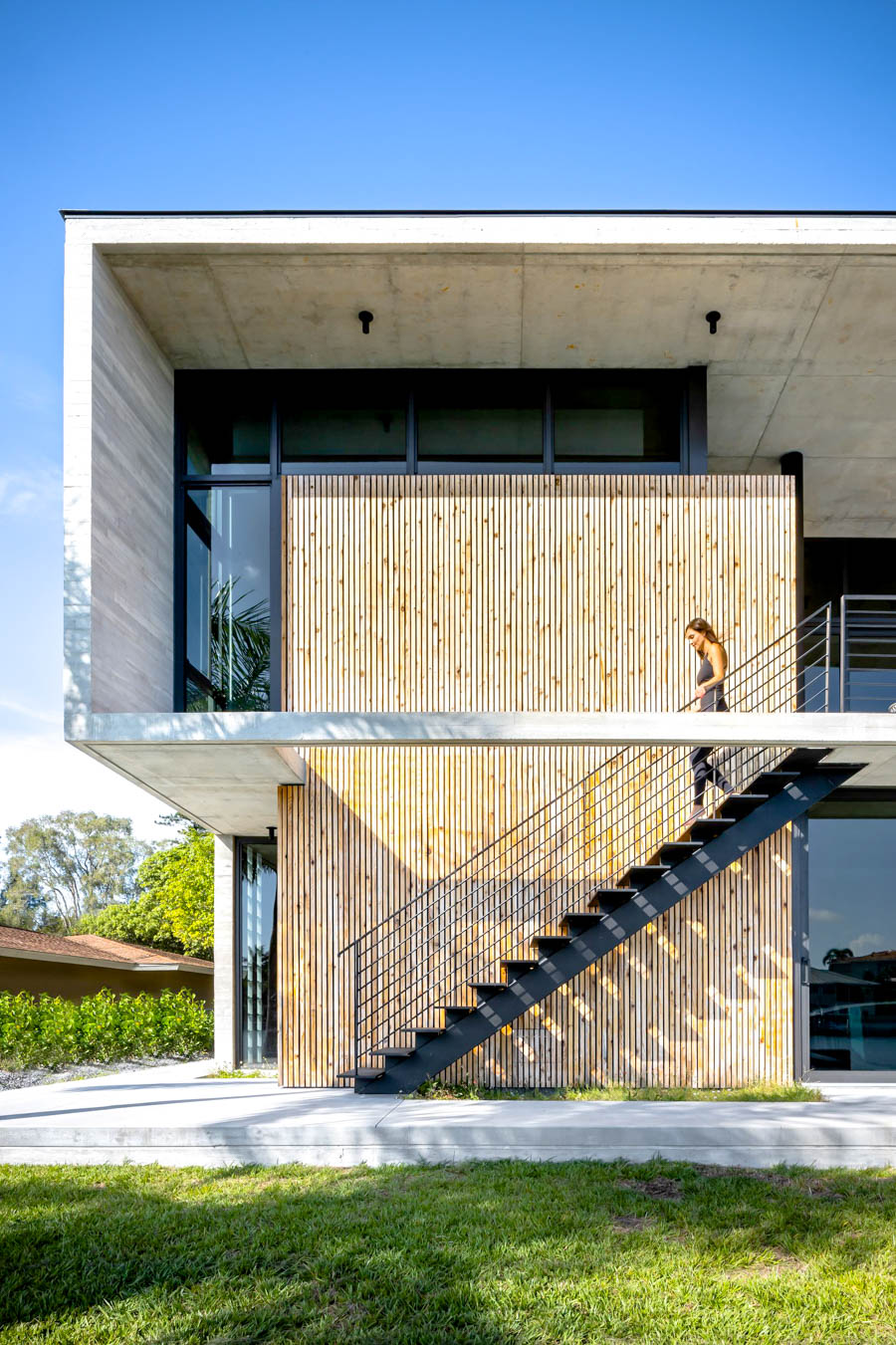
“They allowed us to explore and push the boundary a lot further in materiality than we would have with different clients,” he says. “That freedom is sometimes the thing you need to push you in a different direction and I’m very grateful for that opportunity to push it as far as we did.”
It’s easy to get sidetracked by Blumetti’s deep knowledge of design principles and how they impact the function of a home. But his aesthetic sensibilities are equally remarkable. The Siesta Key Bay House is as visually stunning as it is technically interesting. Even though it’s made of imposing materials like glass, concrete and galvanized steel, the exterior appearance of the house is almost ethereal, floating serenely above the landscape. Inside, polished concrete floors provide a textural contrast against the board-formed concrete walls. According to Blumetti, the aesthetic appeal is a byproduct of the materials and techniques used.
“There’s a rawness to this building. You can see how it was constructed and you understand it because we’re not covering anything up,” Blumetti says. “I think there’s almost an instant patina to it, which is kind of unique. It’s not precious but it is beautiful, and I think that’s an interesting duality.”





